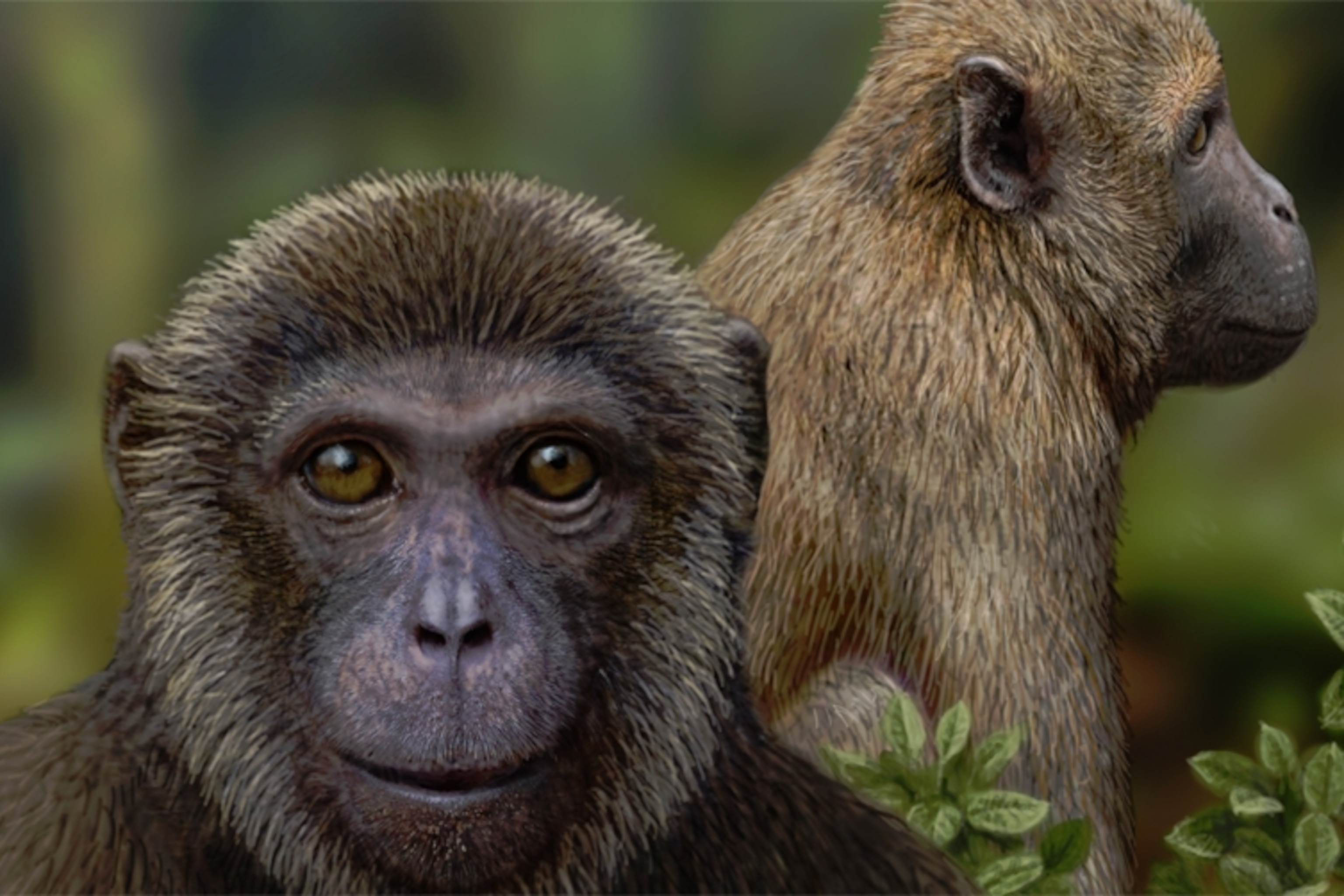
Two New Fossils Reveal Details of Ape/Monkey Split
In 2011, a team of palaeontologists led by Nancy Stevens, unearthed a single molar in Tanzania’s Rukwa Rift Basin. It was a tiny fossil, but its distinctive crests, cusps and clefts told Stevens that it belonged to a new species. What’s more, it belonged to the oldest known Old World monkey—the group that includes modern baboons, macaques and more. They called it Nsungwepithecus.
A year later, and 15 kilometres away, the team struck palaeontological gold again. They found another jawbone fragment, this one containing four teeth. Again, a new species. And again, an old and distinctive one. The teeth represent the oldest fossils of any hominoid or ‘ape’. They called it Rukwapithecus.
Together, these two new species fill in an important gap in primate evolution. Based on the genes of living species, we know that Old World monkeys and apes must have diverged from each other between 25 and 30 million years ago. But until now, there weren’t any fossils from either group during that window. The ones we found were all 20 million years old or younger.
But Nsungwepithecus and Rukwapithecus were both found in sediments that could be precisely dated to 25.2 million years ago. They imply that apes had already split away from Old World monkeys by that time. Finally, fossils had corroborated the story that genes were telling. And they suggested that the split between these two groups took place against a backdrop of geological upheaval.
I wrote about the discoveries for The Scientist so head over there for the full story.
Go Further
Animals
- Octopuses have a lot of secrets. Can you guess 8 of them?
- Animals
- Feature
Octopuses have a lot of secrets. Can you guess 8 of them? - This biologist and her rescue dog help protect bears in the AndesThis biologist and her rescue dog help protect bears in the Andes
- An octopus invited this writer into her tank—and her secret worldAn octopus invited this writer into her tank—and her secret world
- Peace-loving bonobos are more aggressive than we thoughtPeace-loving bonobos are more aggressive than we thought
Environment
- Listen to 30 years of climate change transformed into haunting musicListen to 30 years of climate change transformed into haunting music
- This ancient society tried to stop El Niño—with child sacrificeThis ancient society tried to stop El Niño—with child sacrifice
- U.S. plans to clean its drinking water. What does that mean?U.S. plans to clean its drinking water. What does that mean?
- Food systems: supporting the triangle of food security, Video Story
- Paid Content
Food systems: supporting the triangle of food security - Will we ever solve the mystery of the Mima mounds?Will we ever solve the mystery of the Mima mounds?
History & Culture
- Strange clues in a Maya temple reveal a fiery political dramaStrange clues in a Maya temple reveal a fiery political drama
- How technology is revealing secrets in these ancient scrollsHow technology is revealing secrets in these ancient scrolls
- Pilgrimages aren’t just spiritual anymore. They’re a workout.Pilgrimages aren’t just spiritual anymore. They’re a workout.
- This ancient society tried to stop El Niño—with child sacrificeThis ancient society tried to stop El Niño—with child sacrifice
- This ancient cure was just revived in a lab. Does it work?This ancient cure was just revived in a lab. Does it work?
Science
- The unexpected health benefits of Ozempic and MounjaroThe unexpected health benefits of Ozempic and Mounjaro
- Do you have an inner monologue? Here’s what it reveals about you.Do you have an inner monologue? Here’s what it reveals about you.
- Jupiter’s volcanic moon Io has been erupting for billions of yearsJupiter’s volcanic moon Io has been erupting for billions of years
- This 80-foot-long sea monster was the killer whale of its timeThis 80-foot-long sea monster was the killer whale of its time
Travel
- How to plan an epic summer trip to a national parkHow to plan an epic summer trip to a national park
- This town is the Alps' first European Capital of CultureThis town is the Alps' first European Capital of Culture
- This royal city lies in the shadow of Kuala LumpurThis royal city lies in the shadow of Kuala Lumpur
- This author tells the story of crypto-trading Mongolian nomadsThis author tells the story of crypto-trading Mongolian nomads